Water resources in winter 2003
River flow
River flows for winter were below normal for much of the country, especially in the central North Island and the east of the South Island. For some rivers in the Manawatu-Wanganui and Otago regions, these are the lowest winter flows on record. However, flows were near normal for Northland and the West Coast, and above normal for Hawke’s Bay and Fiordland.
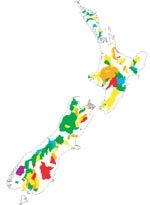

Water clarity
In general, water clarity was higher than normal where flows were lower than normal (e.g., Canterbury, Otago, central North Island), and there were few floods to stir up river sediments. Regions with higher than normal flows (e.g., central Hawke’s Bay) had lower clarity than is usual at this time of year.
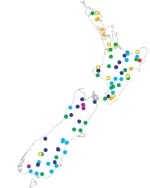

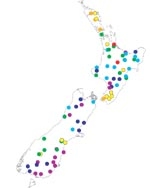

Slime index
Maximum values of the slime index were low over much of the country, which is usual for this time of year. However, rivers in the central and west North Island had much higher slime index values than usual as a result of the unusually low flows there. [The slime index records the cover of the bed by 'nuisance' slimes (algae growing as thick mats or filamentous growths) that reduce the recreational and aesthetic value of the river if too prolific (i.e., cover over 30–60%).]
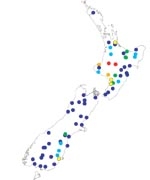
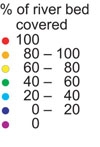
Water temperatures
Stream temperatures were close to normal over much of the country, except for north Canterbury streams, which were up to 2 °C cooler than normal.
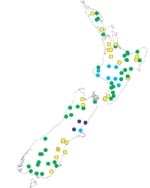



Lake levels
Most of the monitored lakes were close to normal levels, with a tendency to lower than normal levels in the North Island, and slightly higher than normal levels in the South Island. For many lakes, the levels are a reflection of recent weather. However, for lakes that are managed for uses such as hydroelectric power generation or irrigation, the levels also depend on how the lake is managed. For example, water can be stored when inflows are large, and released later, when demand is greatest. Exactly how this is done depends on the timing of the inflows, the patterns of demand for water, and the operating rules for managed lakes.
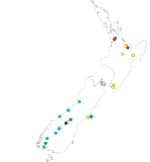

This page summarises a variety of water resources data for the period June to August 2003. Note that the data are preliminary, and subject to amendment after quality assurance procedures. We thank NIWA field teams, regional and district councils and hydro-power companies for providing this information. We hope to expand the coverage with contributed measurements using standard methods at long-term sites.
For information on hydroelectricity storages, see COMIT Free To Air.
Groundwater
Groundwater levels in New Zealand showed the usual seasonal recovery in winter 2003. Levels in the North Island were average for the time of year, whereas levels in South Island indicator wells were generally lower than is typical for winter. Groundwater levels in Marlborough were below those at the corresponding time in 2002. Canterbury levels were generally below average for the time of year, although some parts of north and mid Canterbury had average levels for the winter season. Otago levels were low.
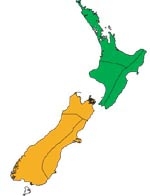

Groundwater information is supplied by the Institute of Geological and Nuclear Sciences Ltd.
